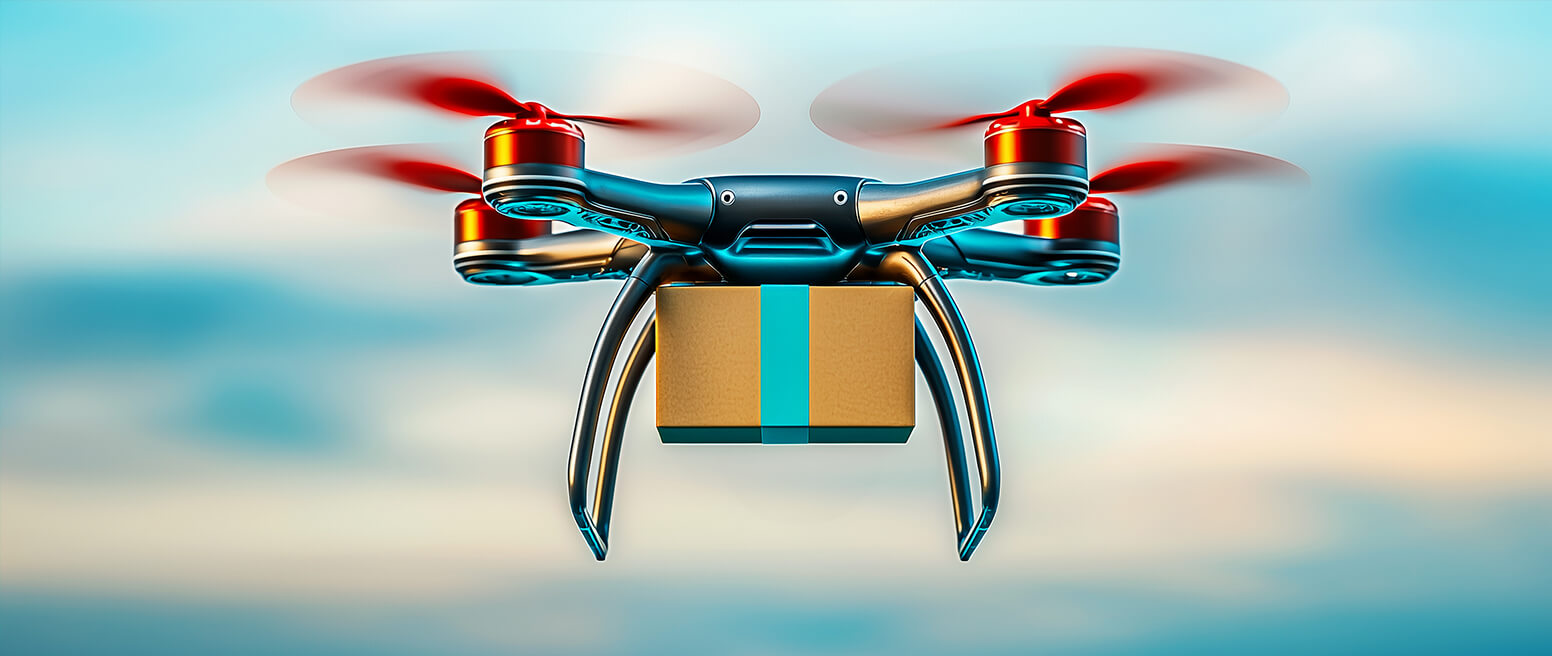10 Ways to Prevent Delivery Service Chargebacks
Covid dealt a significant blow to the restaurant sector. This was especially true for sit-down eateries that typically relied on patrons dining in the restaurant.
With indoor dining restrictions, online ordering became the lifeline for these businesses, transforming the way we get our meals in the process.
We have giants like Uber Eats and Grubhub, plus other more niche delivery apps. Many brands even have their own proprietary delivery services. The convenience of online ordering is now as familiar as traditional takeout.
Unfortunately, delivery service chargebacks are a frequent consequence of online orders. This raises the question: how can your business reap the benefits of online delivery without breaking the bank? Let’s take a look.
Recommended reading
- Venmo Chargebacks: How Do Disputes Work on Venmo?
- What is the Zelle Dispute Process? What Should Victims Do?
- Bank of America Disputes: Here's What You Need to Know
- Stripe Chargeback Fees: Rules, Policies & How to Lower Costs
- How Square Disputes Work | Rules, Protections & More
- Dropshipping Chargebacks | Causes & Tips to Prevent Them
Delivery Chargebacks: At a Glance
A delivery service chargeback happens when a customer contacts their credit card issuer to reverse a charge for goods ordered and requested for delivery.
Keep in mind that, whenever a chargeback is launched, the credit card company digs into the dispute. If they side with the customer, the transaction gets overturned. If this happens, the customer receives their money back, typically withdrawn from the delivery service’s bank account.
While chargebacks act as crucial safeguards for consumers, they can spell trouble for restaurants and service providers in the delivery space. Not only do they result in direct financial losses from reversed transactions, but they can also invite extra fees and penalties.
These disputes can compound, becoming more of a problem for businesses saddled with a high chargeback rate. Additionally, they might strain relationships with payment processors and other service providers.
Who is Liable When a Delivery Goes Wrong?
The liability for a delivery that isn't received can vary depending on the specific circumstances and policies of the involved entities.
The Delivery Service
The delivery service is separate from the restaurant or food vendor (for example, a third-party company like Uber Eats or Grubhub). They might bear the responsibility if the delivery was lost, stolen, or delivered to the wrong address, especially if the error was on their part. They may issue a refund, credit, or redelivery in such situations.Restaurant or Food Vendor
If the restaurant handles its own deliveries, then they would generally be liable for any delivery that isn't received. They might also be liable if the order was incorrectly prepared, which led to the non-delivery (for example, if an item was forgotten, causing the customer to reject the delivery).Customer
If the customer provided incorrect delivery information or wasn't available to receive the delivery at the specified time and place, they might not be eligible for a refund.These are general scenarios, and the specific policy can vary by restaurant, delivery service, and location. It's always a good idea to check the terms of service or delivery policy for each specific restaurant or delivery app.
Why Do Delivery Service Chargebacks Happen?
In the food delivery world, there's no shortage of things that can go sideways. Maybe the driver left the meal at the wrong doorstep. Maybe quick-fingered “porch pirates” beat the customer to the goods. Or, perhaps the order isn't quite right, with missing or incorrect items.
Here are a few common reasons for food delivery chargebacks:
- The customer can’t identify the billing descriptor on their statement
- The customer isn’t satisfied with the delivery
- The delivery never showed up
- The customer denies they made the order, hinting at potential fraud or identity theft.
There are also occasional customers who dispute their orders, either because they feel they got the short end of the stick or they're trying to game the system to score a free meal. This is an act of first-party misuse, or friendly fraud, as it’s commonly known.
How Do Chargebacks Impact Food Delivery Services?
Delivery service chargebacks can deeply disrupt your daily operations. Each dispute translates to revenue loss and increased administrative expenses.
You may be able to challenge the customer’s claim through representment. Even if you win, you will be assessed a chargeback fee and take a hit to your chargeback ratio. This will lead to increased costs and more complications in the future.
These disputes hurt the industry as a whole. The more disputes that are filed, the more risky the food delivery business appears. That leads to higher processing fees, stricter operating limitations, and more.
Chargebacks lead to:
Learn more about chargeback costsOverall, delivery service chargebacks have far-reaching impacts. They affect your reputation, customer relationships, operational efficiency, and compliance standing.
10 Ways to Prevent Delivery Service Chargebacks
You must proactively address chargeback issues. The keys to this are improved communication, enhanced customer satisfaction measures, and effective dispute resolution when necessary.
You need to embrace a customer-centric approach focused on transparency and satisfaction. This proactive approach fosters trust, prevents misunderstandings, and ensures customers make informed decisions about purchases.
To that end, here are ten chargeback prevention best practices that we recommend to decrease your overall chargeback issuances:
#1 | Communicate Clearly
Ensure that all terms, requirements, and other crucial information are clearly communicated to customers. Using plain language and avoiding industry jargon that may confuse or mislead customers is crucial. Providing comprehensive documentation and offering opportunities for customers to ask questions can enhance their understanding and reduce the likelihood of chargebacks resulting from a misunderstanding.
#2 | Educate Customers
Educating customers is essential. You should offer resources like user-friendly guides, online portals, dedicated customer support, etc., to help customers. Regular communication, reminders, and updates about any changes to service or upcoming renewal dates can also minimize confusion and prevent disputes.
#3 | Clarify Billing Practices
Accurate billing practices are critical to prevent billing disputes and delivery service chargebacks. You should ensure that invoices and statements are error-free, clearly indicating the services provided, associated costs, and any adjustments or refunds. Billing transparency and easy-to-understand itemization can help customers recognize and validate charges, reducing the chances of chargebacks.
#4 | Provide Training
Conducting comprehensive training for sales representatives who engage with customers is crucial. This training should emphasize accurate representation of terms and ensure that sales agents thoroughly understand the products and can effectively communicate them to potential customers.
#5 | Prioritize Customers
Maintaining strong customer service is vital for addressing customer concerns and resolving issues promptly. By offering accessible channels of communication, such as phone, email, or live chat, you can proactively assist customers, clarify uncertainties, and address complaints before they escalate to delivery service chargebacks. Timely and empathetic customer support can go a long way in preventing disputes.
#6 | Ensure Compliance
Staying up-to-date with industry regulations and adhering to best practices for data security and privacy can minimize potential compliance issues. Complying with regulatory requirements can reduce the risk of penalties, legal disputes, and subsequent chargebacks.
#7 | Automate Reminders
Using automated payment reminders can help customers stay informed about upcoming due dates and avoid missed payments. Sending timely notifications through email, text messages, or mobile apps can prevent accidental lapses in service.
#8 | Improve Documentation
You should ensure that any policy documentation is comprehensive, easily accessible, and written in customer-friendly language. Clear and detailed terms, service limitations, exclusions, and procedures can minimize misunderstandings and disputes.
#9 | Enhance Verification
Implementing thorough verification processes during a transaction can help confirm your customers’ identities, intentions, and understanding of the service. This can include additional authentication measures or validation checks to mitigate instances of fraudulent or unauthorized transactions.
#10 | Seek Feedback
Regularly seeking customer feedback through surveys, satisfaction ratings, or online reviews can provide valuable insights into which improvement may be necessary. Addressing customer concerns promptly can help prevent frustrations from escalating into delivery service chargebacks and demonstrate a commitment to customer satisfaction.
Learn more about chargeback preventionChargebacks Require a Better Solution
Any combination of the best practices outlined above can help you create a solid framework to minimize chargebacks. You can also enhance customer satisfaction and ensure a smooth and secure experience for customers in the process.
All that said, a piecemeal strategy won’t be effective. True fraud prevention and risk mitigation require a more comprehensive approach. Fortunately, we can help.
Chargebacks911® offers a true end-to-end technology platform that prevents more disputes, wins more reversals, and maximizes your ROI. Contact us today for more information on how to improve customer service to prevent chargebacks.
FAQs
Can I chargeback for late delivery?
Late delivery chargebacks can only be filed if the ordered items are significantly outside of a “standard” delivery timeframe. Even then, only if the delivery service refuses to refund for a genuine issue; for instance, an meal order that is significantly late to the point that the food is no longer viable. Customers are not entitled to a chargeback for an order that is running a few minutes late.
Can I get a partial refund for late delivery?
In many cases, yes. However, this is between you and the merchant in question, and should be worked out with the merchant directly.
Who is responsible for delivery not received?
Depending on who the customer ordered from, liability would be apportioned first to the delivery service, then to the restaurant. The customer is entitled to a chargeback if neither can satisfy a serious misstep. However, if the customer gave the wrong address or simply didn’t recognize the merchant’s billing details, they are not entitled to a chargeback.















